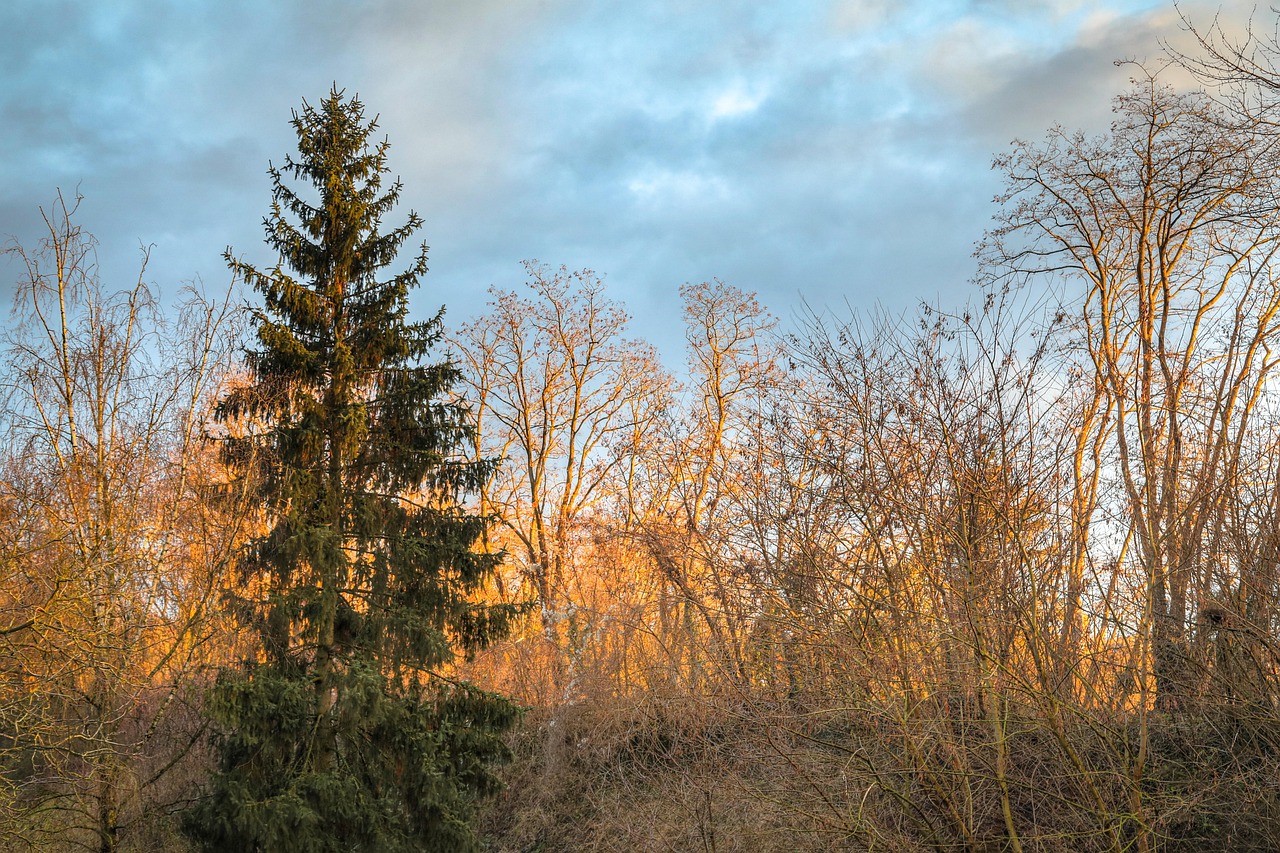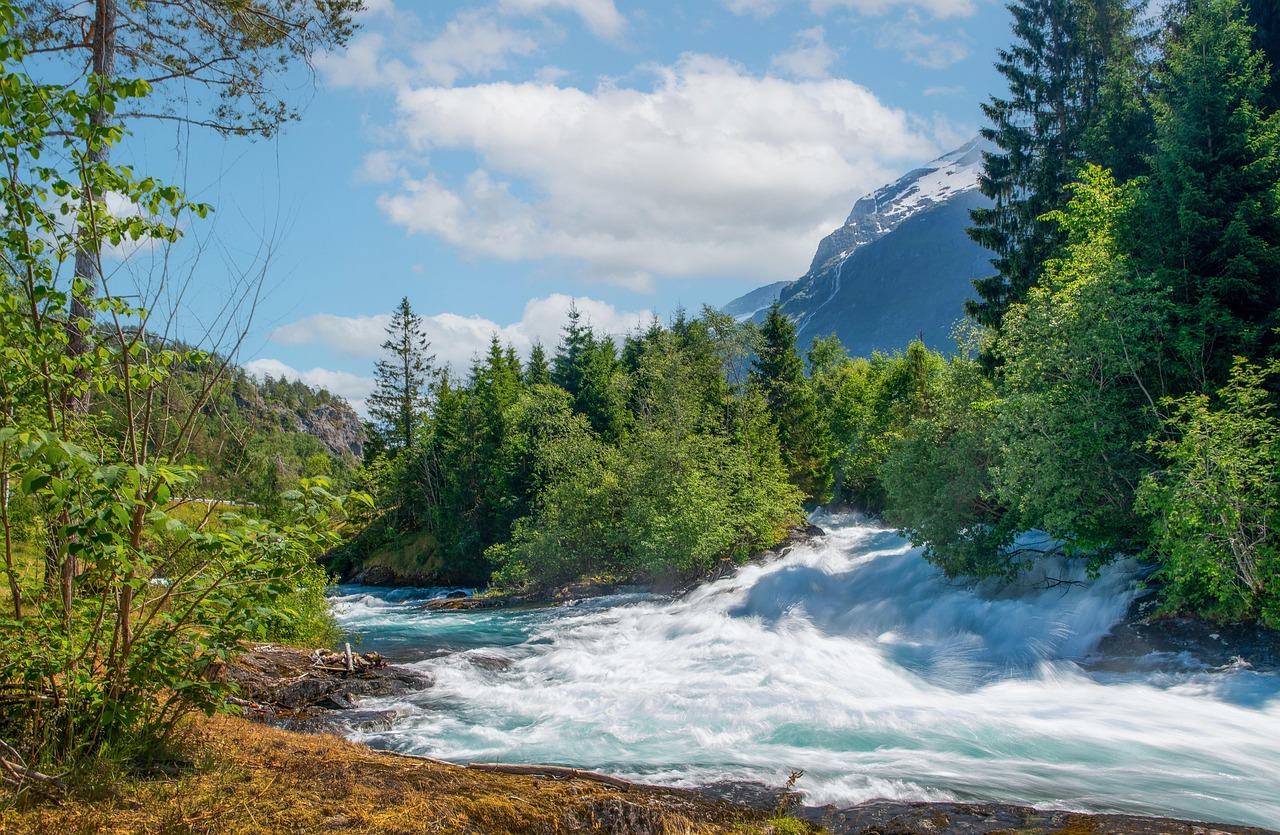The Norway spruce tree grows at an average rate of 1 to 2 feet per year under optimal conditions, making it a popular choice for Christmas farms. Factors such as soil quality, climate, and maintenance practices can significantly influence this rate.
Understanding Norway Spruce Trees
The Norway spruce (Picea abies) is a species native to Europe. It is known for its conical shape and strong branches, making it an excellent choice for holiday decorations. This evergreen tree is commonly used as a Christmas tree due to its pleasing appearance and fragrant scent.

Norway spruce trees thrive in various soil types, but they prefer well-drained, sandy loam. These trees are adaptable to different climatic conditions; however, they grow best in cooler temperatures. In the right environment, Norway spruces can reach heights of 60 to 100 feet and have a lifespan of over 200 years. For Christmas farms, understanding their growth rate is essential for planning and management.
Factors Affecting Growth Rate
Several factors influence the growth rate of Norway spruce trees on Christmas farms. Here are some key elements to consider:
- Soil Quality: Well-drained soil rich in nutrients supports faster growth.
- Climate: Norway spruces thrive in cooler climates with adequate rainfall.
- Watering: Consistent watering during dry periods is crucial for healthy growth.
- Sunlight: These trees require full sunlight for optimal growth.
- Pests and Diseases: Managing pests and diseases can prevent stunted growth.
Growth Rate Overview
The growth rate of Norway spruce can vary based on age and environmental factors. Young trees typically exhibit a faster growth rate compared to older ones. Below is an overview of the average growth rates by age:

| Age (Years) | Average Height (Feet) | Growth Rate (Feet/Year) |
|---|---|---|
| 1 | 1-3 | 1-2 |
| 5 | 5-10 | 1-2 |
| 10 | 10-20 | 1-2 |
| 20+ | 20-40 | 0.5-1 |
This table highlights that during the first few years, the Norway spruce can achieve a notable height increase. However, as the tree matures, its growth rate tends to slow down. This pattern is common among many tree species and is important for Christmas farm operators to understand for effective management.
Best Practices for Optimizing Growth
To maximize the growth potential of Norway spruce trees, farmers should adopt specific best practices. Here are some recommendations:
- Soil Testing: Conduct soil tests to determine nutrient levels. Adjust fertilization accordingly.
- Irrigation: Implement a proper irrigation system to provide consistent moisture.
- Pest Management: Regularly inspect trees for signs of pests or diseases and take appropriate action.
- Pruning: Prune trees at a young age to encourage strong branching and shape.
- Spacing: Ensure adequate spacing between trees to promote airflow and reduce competition for resources.
By following these practices, Christmas farmers can ensure healthy growth and a successful harvest of Norway spruce trees, ultimately leading to a profitable operation. Understanding the growth patterns and factors affecting Norway spruce is essential for anyone involved in cultivating these iconic holiday trees.

Common Challenges in Growing Norway Spruce
While Norway spruce trees are relatively easy to grow, there are several challenges that Christmas farmers may face. Understanding these challenges can help farmers proactively address issues and maintain healthy trees. Below are some common problems associated with growing Norway spruce.
Pests and Diseases
Norway spruce trees can be susceptible to various pests and diseases. Identifying these threats early is crucial for effective management. Here are some of the most common pests and diseases:
- Spruce Budworm: This caterpillar feeds on the buds and foliage of the tree, potentially leading to significant defoliation.
- Spider Mites: These tiny pests can cause leaf discoloration and weaken trees by sucking the sap.
- Root Rot: Caused by fungal pathogens, root rot can severely affect tree health, especially in poorly drained soils.
- Needle Cast: This fungal disease affects the needles, causing them to yellow and drop prematurely.
Nutrient Deficiencies
Nutrient deficiencies can also impede the growth of Norway spruce trees. Common deficiencies include:

- Nitrogen Deficiency: Yellowing needles and stunted growth are signs of nitrogen deficiency.
- Iron Deficiency: This often manifests as yellowing between the leaf veins, particularly in younger needles.
- Phosphorus Deficiency: A lack of phosphorus can lead to poor root development and reduced growth rates.
Conducting regular soil tests can help farmers determine nutrient levels and make necessary adjustments to fertilization practices.
Optimal Conditions for Growth
To promote healthy growth of Norway spruce trees, farmers should strive to create optimal growing conditions. Several environmental factors contribute to the success of these trees.
Soil Requirements
The ideal soil for Norway spruce is well-drained and rich in organic matter. Here are some considerations:
- Soil pH: Norway spruce prefers a slightly acidic to neutral pH range of 5.5 to 7.0.
- Drainage: Good drainage is essential to prevent root rot. Avoid planting in areas prone to standing water.
- Nutrient Content: Incorporate organic matter such as compost to improve soil fertility and structure.
Climate Considerations
The climate plays a significant role in the growth rate of Norway spruce. Here are some key climate factors:
- Temperature: Norway spruce thrives in cooler climates, ideally between 60°F and 75°F during the growing season.
- Rainfall: These trees require adequate moisture, especially during the first few years of growth.
- Wind Exposure: Protecting young trees from strong winds can minimize damage and promote steady growth.
Irrigation Techniques
Irrigation is critical for maintaining healthy Norway spruce trees, especially during dry spells. Here are some effective irrigation techniques:
- Drip Irrigation: This method delivers water directly to the root zone, minimizing water waste and ensuring consistent moisture.
- Soaker Hoses: These hoses allow water to seep slowly into the soil, making them ideal for tree rows.
- Irrigation Scheduling: Monitor soil moisture levels and adjust watering schedules based on weather conditions and tree age.
Proper irrigation practices not only support growth but also enhance the overall health of Norway spruce trees. By understanding their specific needs, farmers can ensure that their trees thrive throughout the growing season.
Harvesting Norway Spruce Trees
Harvesting is a crucial phase in managing a Christmas tree farm. Knowing when and how to harvest Norway spruce trees can maximize profits while ensuring sustainability. Here are some important points regarding harvesting:
Timing of Harvest
The ideal time to harvest Norway spruce trees is typically between late November and mid-December. Factors influencing this timing include:
- Tree Size: Trees should reach a height of 6 to 8 feet for optimal market value.
- Crowd Demand: Timing may vary based on customer demand and local market trends.
- Weather Conditions: Favorable weather conditions can affect the timing of harvesting operations.
Harvesting Techniques
Effective harvesting techniques are essential for minimizing damage to both the trees and surrounding plants. Some recommended methods include:
- Sawing at the Base: Use a sharp saw to cut the tree close to the ground without damaging nearby trees.
- Use of Equipment: Depending on the scale of the farm, consider using machinery for efficiency.
- Caring for Cut Trees: Immediately place cut trees in water or in a shaded area to maintain freshness until sold.
By considering these factors and techniques, Christmas farmers can optimize their harvesting process while ensuring high-quality Norway spruce trees for customers.
Marketing Norway Spruce Trees
Once the Norway spruce trees are harvested, effective marketing strategies are essential for maximizing sales. Christmas tree farming is not only about cultivation; it also involves attracting customers and ensuring they choose your trees over competitors. Below are some key marketing strategies that can help in selling Norway spruce trees.
Targeting Your Audience
Understanding your target market is vital for effective marketing. Here are some potential customer segments:
- Local Families: Households looking for a traditional Christmas experience often seek out local farms for their trees.
- Businesses: Companies may purchase trees for office decorations or holiday events.
- Event Planners: These professionals may seek bulk purchases for parties or community events.
Identifying these segments allows farmers to tailor their marketing messages and promotional efforts accordingly.
Creating a Strong Online Presence
In today’s digital age, having a robust online presence is crucial. Here are some steps to enhance your visibility:
- Website Development: Create a user-friendly website that showcases your trees, provides information on care, and includes contact details.
- Social Media Engagement: Utilize platforms like Facebook and Instagram to share photos of your trees and engage with customers.
- SEO Optimization: Implement search engine optimization techniques to improve your website’s ranking on search engines.
Seasonal Promotions and Events
Offering seasonal promotions and hosting events can attract more customers to your farm. Here are some ideas:
- Discounts: Consider offering early-bird discounts for customers who purchase trees before a certain date.
- Family Events: Host tree-lighting ceremonies, holiday markets, or family-friendly activities to draw in crowds.
- Workshops: Offer workshops on tree care or holiday decorating tips to engage with the community.
Customer Experience and Services
A positive customer experience can lead to repeat business and word-of-mouth referrals. Here are some important aspects to consider:
Caring for Customers
Providing excellent customer service is essential. Here are some tips to ensure customer satisfaction:
- Knowledgeable Staff: Train staff to answer questions about tree types, care, and maintenance effectively.
- Personalized Services: Offer assistance in selecting the perfect tree based on customer preferences.
- Delivery Options: Consider providing delivery services for customers who may have difficulty transporting their trees.
Post-Purchase Support
After customers purchase their trees, providing ongoing support can enhance their experience. Consider these practices:
- Care Instructions: Provide printed care instructions with each tree to help customers maintain their purchases.
- Follow-Up Communication: Send a thank-you email or message and offer tips for post-holiday disposal or recycling of the tree.
- Loyalty Programs: Implement loyalty programs that reward repeat customers with discounts or special offers for future purchases.
Sustainability Practices in Christmas Tree Farming
Sustainability is becoming increasingly important to consumers. Implementing eco-friendly practices can not only improve your brand image but also contribute positively to the environment. Here are some sustainable practices for Norway spruce tree farming:
Soil and Water Conservation
Practicing soil and water conservation helps maintain healthy ecosystems. Here are some strategies:
- Cover Crops: Use cover crops to prevent soil erosion and improve soil health during off-seasons.
- Irrigation Management: Implement efficient irrigation techniques to conserve water while ensuring trees receive adequate moisture.
Pest Management Techniques
Integrated pest management (IPM) can minimize pesticide use while protecting tree health. Consider these approaches:
- Biodiversity: Encourage natural predators by planting diverse crops around the farm.
- Pest Monitoring: Regularly monitor pest populations to apply treatments only when necessary.
Recycling and Disposal Practices
Encourage sustainable disposal practices for Christmas trees after the holiday season:
- Tree Recycling Programs: Partner with local municipalities to set up recycling programs for discarded trees.
- Composting Options: Promote composting as an environmentally friendly way to dispose of trees.
By implementing sustainable practices, Christmas tree farmers can appeal to environmentally conscious consumers while contributing positively to the ecosystem.
Future Trends in Norway Spruce Tree Farming
As the demand for Christmas trees continues to evolve, so too does the approach to farming Norway spruce. Several future trends are expected to shape the industry, impacting growth rates, sustainability practices, and consumer preferences.
Climate Change Adaptation
Climate change is a significant factor affecting agriculture worldwide, including Christmas tree farming. Farmers must adapt to changing weather patterns, which can impact growth rates and tree health. Here are a few strategies:
- Drought-Resistant Varieties: Research may lead to the development of drought-resistant Norway spruce varieties better suited for changing climates.
- Microclimate Management: Utilizing techniques to create favorable microclimates can help mitigate the effects of extreme weather.
- Water Conservation Technologies: Investing in smart irrigation systems can help conserve water during dry spells.
Consumer Preferences Shifting Toward Sustainability
Today’s consumers are more environmentally conscious than ever. This shift is leading farmers to implement sustainable practices. Here are some ways that consumer preferences are influencing tree farming:
- Organic Practices: Many consumers prefer trees grown without synthetic pesticides or fertilizers.
- Local Sourcing: There is a growing trend towards purchasing locally grown trees, which support local economies and reduce transportation emissions.
- Transparency: Customers are increasingly interested in knowing how their trees are grown, prompting farmers to share their practices openly.
Technological Innovations
The integration of technology in agriculture is transforming how Christmas tree farms operate. Some innovations include:
- Drones: Drones can be used for monitoring tree health and assessing growth patterns from above.
- Soil Sensors: These devices provide real-time data on soil moisture and nutrient levels, allowing for precise management.
- E-commerce Platforms: Online sales are becoming increasingly vital, allowing farmers to reach a broader audience and streamline sales processes.
Final Thoughts
The Norway spruce remains a beloved choice for Christmas trees due to its beauty and fragrance. Understanding its growth rate and the various factors that influence it is essential for successful farming. Farmers must navigate challenges such as pests, diseases, and climate change while implementing sustainable practices to meet consumer demands.
The future of Norway spruce tree farming looks promising, especially as advancements in technology and shifts in consumer preferences continue to shape the industry. By staying informed and adaptable, Christmas tree farmers can thrive and ensure their operations remain viable for generations to come.
In conclusion, Norway spruce trees provide not only a festive spirit during the holiday season but also an opportunity for farmers to engage with their communities sustainably. With proper care, knowledge of growth patterns, and innovative marketing strategies, farmers can cultivate thriving Christmas tree farms that contribute positively to both the economy and the environment.
